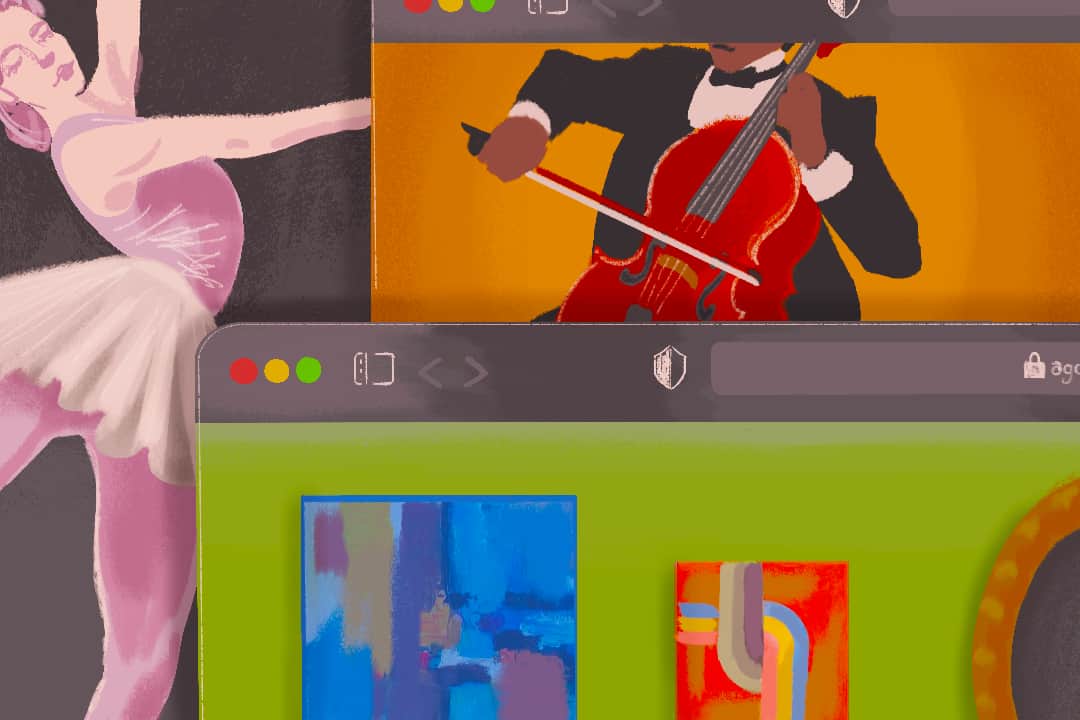Disability is a prevalent experience among Canadians. The most recent Canadian Survey on Disability found that one in five Canadians aged 15 or above had one or more disabilities. The University of Toronto alone has more than 2,000 students registered with accessibility services.
Whether physical, sensory, cognitive, or mental, all disabilities have the potential to pose significant barriers for individuals to fully enjoy the arts. Theatres may be wheelchair-accessible, but the bus ride to get there may not be; museums may display educational artifacts, but the stressful long lines may stop a visitor with autism from comfortably learning.
These accessibility problems may have found a solution due to COVID-19’s impact on everyday life: digitalization.
What has been done
While originally a reaction to COVID-19-related lockdowns, many Canadian art institutions are now offering accessible online experiences of arts and culture.
Classical plays at the Stratford Festival may now be screened through the subscription streaming service STRATFEST@HOME. Paid on a monthly basis, subscribers can watch historical performances, supplementary content, educational videos, and guest forums.
Ensemble music by the Toronto Symphony Orchestra (TSO) is now available on TSO On Demand, where patrons can purchase tickets to online concerts. Pass-holders can view hour-long performances recorded at Roy Thomson Hall as well as behind-the-scenes moments with special guests.
The Art Gallery of Ontario’s YouTube channel uploads videos in which curators and artists explain interesting collections. At no cost, viewers can hear perspectives from professional curators about art ranging from medieval artifacts to postmodern artworks.
The Royal Ontario Museum (ROM) offers free online exhibitions, some of which are presented through Google’s Arts & Culture. There is also the newly created ROM AT HOME, where ROM experts take the virtual visitor on a guided artifact tour and provide educational activities that can be done by children at home.
With all of these virtual adaptations, a wealth of arts and culture is now just a click away and brought to the comfort of our own homes. We should applaud what has been done since it undoubtedly alleviates disability-related obstacles, especially for those with physical and mobility disabilities.
Why accessible art should stay
But more needs to be done to remove accessibility barriers altogether — and we may already be halfway there.
Performances are already recorded, and now they just need the addition of closed captions or sign language interpretation for those with hearing impairments. Plays are already scripted, and now they just need more narration to assist those with visual impairments. Exhibit labels are already written, and now they just need image magnification and text-to-speech options.
The most difficult part of digitalization — that is, actually moving the content online — has already been done. Why should these efforts be wasted post-COVID-19?
Obviously, the much more prudent choice is to let these adjustments stay. The immediate benefit of digitalization is the broadening of inclusivity for those with physical and sensory disabilities, as we have already seen.
The long-term educational value of accessible digital art should also be considered. Individuals with cognitive disabilities, such as attention deficit disorder, may benefit as they are able to repeat performances as many times as they see fit and read exhibit materials for a longer period of time without worrying about being in the way of other visitors.
Those with mental health conditions, such as social anxiety, may benefit as they can wholeheartedly learn and contemplate the artistic experience within the solace of their own homes and without having to be under the pressure of a distressing public environment.
In short, digital art is an initiative with multiple rewards. It has made it easier for one fifth of Canada’s population to indulge in arts and culture by giving them greater control and less discomfort. In return, these accessibility advances provide a pathway for art institutions to promote Canadian art to those previously excluded. At the same time, digital art also contributes positively to Canada’s broader cultural education by making the learning process feasible and enjoyable.
Beyond COVID-19
The pandemic, while presenting great challenges, offers a golden opportunity for the arts and culture sector to adapt, innovate, and improve. Previously hollow statements and commitments to accessibility are now — finally — forced into action.
The United Nations’ Convention on the Rights of Persons with Disabilities, which Canada has ratified, promises to “take all appropriate measures to ensure that persons with disabilities enjoy access to cultural materials in accessible formats.” Right now is the perfect time to take that “appropriate measure.” Right now is the perfect time to refine that “accessible format.”
Right now, we already have the foundation of digitalized art. All we need to do is fill in the remaining accessibility gaps and let these digitalization projects stay — for good.


